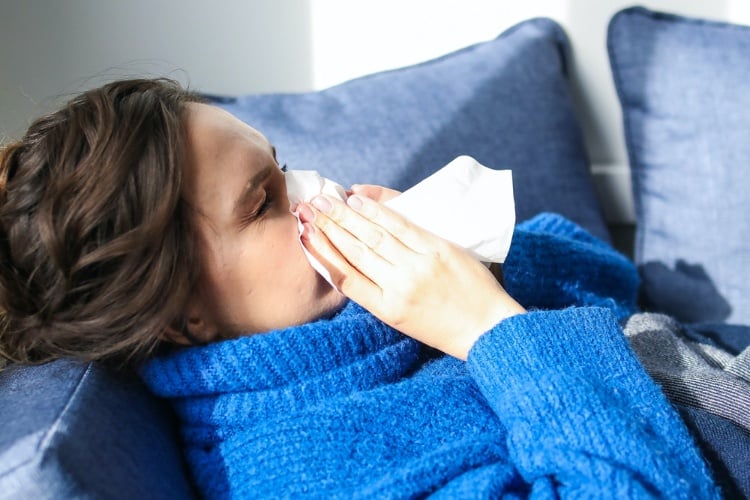“Am I too sick to work?” is a more complicated question than it seems when it comes to the foodservice industry. Staffing shortages, difficult commutes, and fluctuating income from tips can mean foodservice workers face a difficult decision when they are feeling under the weather. Most people want (and need) to work, so many will still show up if they aren’t feeling their best. Unfortunately, their perseverance can contribute to making food unsafe.
In this article we will break through the confusion with these topics:
When do I report an illness to my manager?
Norovirus in the foodservice industry
How do I protect my customers, staff, and myself from foodborne illnesses?
What symptoms have to be reported?
When do I talk to my manager?
It can be difficult to know when to report to a manager or shift leader when you’re feeling ill, but it could go a long way in protecting customers from foodborne illnesses – and workers from losing their jobs. According to the Centers for Disease Control (CDC), foodborne illnesses affect millions of people and cause thousands of deaths every year. Approximately half of all those food-related illness outbreaks are caused by norovirus, or more commonly, the stomach flu.
Norovirus in the foodservice industry
Did you know that people with norovirus are contagious from the moment they feel sick until at least three days after recovery? A nasty stomach bug with diarrhea, vomiting, nausea, and/or stomach cramping can appear seemingly out of nowhere because norovirus is highly contagious. Norovirus can easily be transferred airborne, through sneezing, coughing, or vomit. People can also become infected by touching surfaces that are contaminated, then touching their mouths or by eating foods that are contaminated.
Norovirus can survive up to two weeks on inanimate objects. This means if someone touches a contaminated surface like a doorknob, light switch, or elevator button and then touches their mouth the contamination can spread and cause more illness. Food can become infected by direct contact with contaminated hands, direct contact with surfaces that are contaminated with infected stool or vomit, or tiny droplets that spray through the air when someone vomits.
How do I protect my customers, staff, and myself from foodborne illnesses?
Following proper handwashing practices and ensuring that no one has bare-hand contact with ready-to-eat foods are the two best strategies when it comes to protecting both the people and foods in your workspace. If you’re feeling sick, the best course of action is to talk to your manager. Depending on your symptoms and level of exposure, you may be restricted or excluded from working with food.
What symptoms have to be reported?
People working in the food industry have a responsibility to report certain symptoms including:
-
Vomiting
-
Jaundice (yellowing of the eyes and skin)
-
Diarrhea
-
Sore throat with fever
-
Infected wounds or lesions with pus (on hands or exposed body parts)
Foodservice workers should also report if they or a member of their household has been diagnosed by a doctor with:
-
Norovirus
-
Salmonella typhi (typhoid fever)
-
Hepatitis A
-
Shigellosis
-
Nontyphoidal Salmonella
When do I report an illness?
It must also be reported when a foodservice worker:
-
Consumes or handles food that was implicated in a foodborne illness outbreak
-
Works in a location that had a confirmed outbreak
-
Lives with someone who works or was in a location that was known to have had a foodborne illness outbreak
Test yourself! Do you know which scenarios should be reported?
|
Scenario |
Should This Be Reported? |
|
A sandwich maker developed a fever since arriving at work. |
No. A fever alone does not need to be reported. Someone would need to report it if they had a sore throat with the fever. |
|
A prep chef has itchy eyes and a runny nose while preparing vegetables. |
No. There is likely little risk. They should avoid touching their eyes or nose, and if they do, they should wash their hands before continuing. |
|
A pizza maker vomited several times before coming to work. |
Yes, vomiting always requires reporting. |
|
A grill operator has been feeling tired for several days. While at work, a coworker comments that their skin looks yellow. |
Yes, fatigue and yellowing of skin may indicate jaundice. |
|
A salad maker has had a sore throat for several days but otherwise feels fine. |
No, a sore throat without an accompanying fever does not require reporting. |
|
A chef has a stomachache and has made several trips to the restroom during a shift due to diarrhea. |
Yes, someone with diarrhea must report that they are ill and should not be handling food. |
The Takeaway
Along with dangerous and sometimes fatal symptoms, foodborne illnesses can also result in billions of dollars lost, legal action, and damaged reputations. Knowing when it is necessary to report an illness to your manager can protect everyone who comes through their doors.






.png)

.png)
